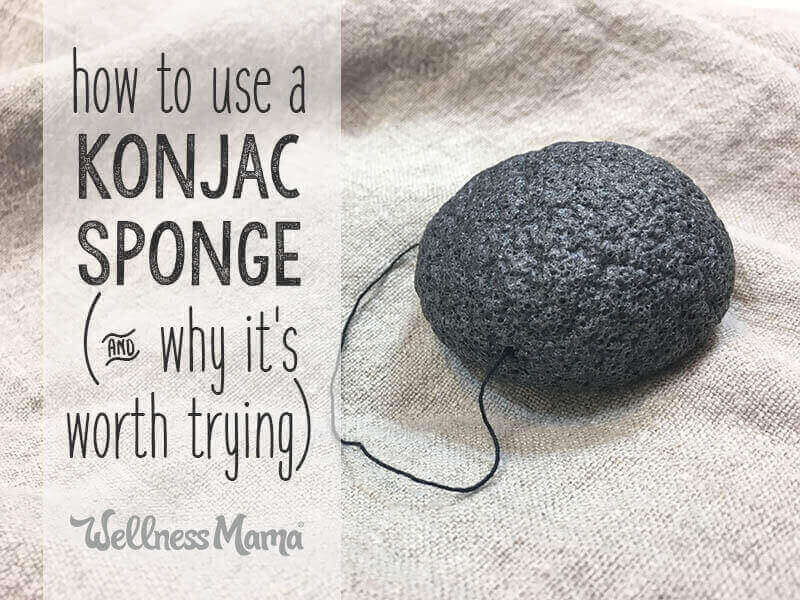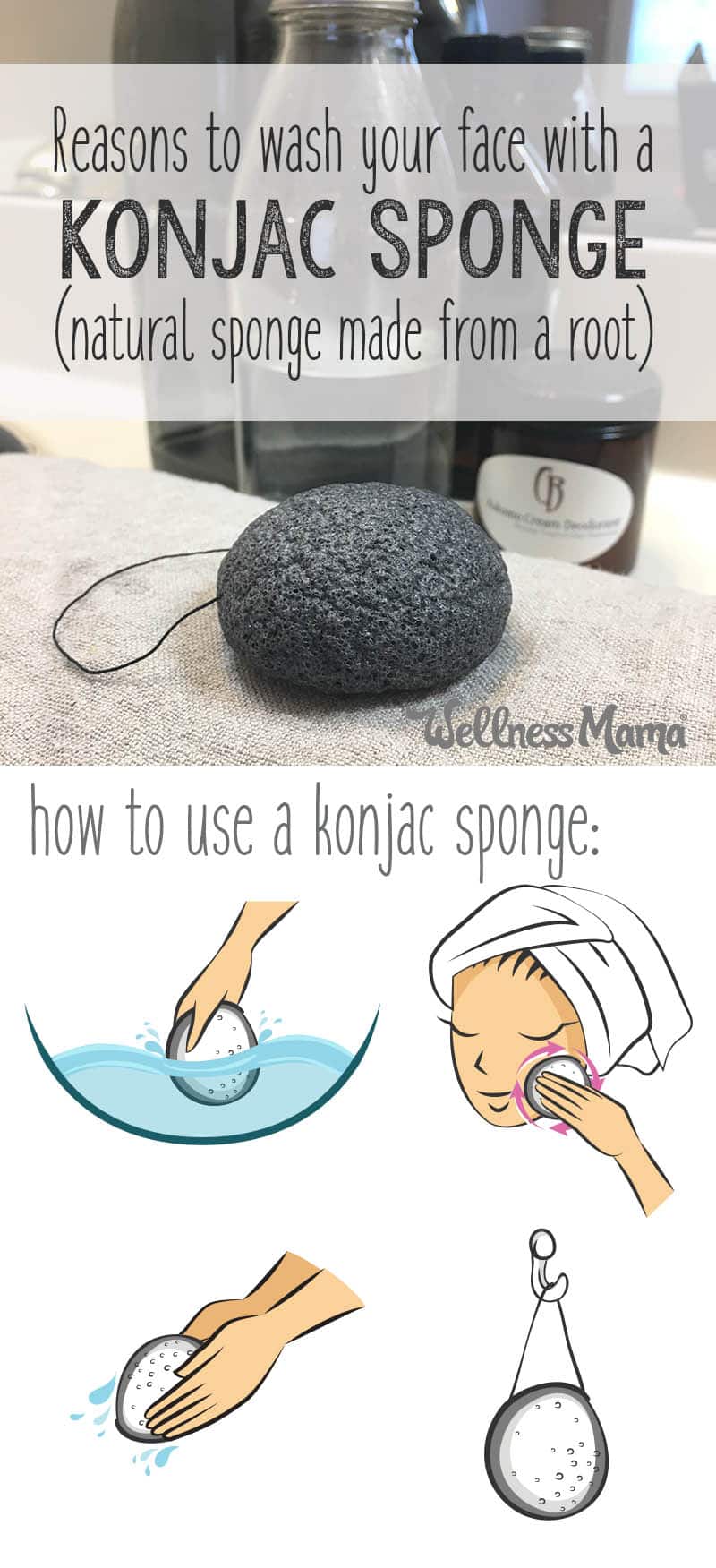
Ever heard of a konjac sponge? It’s true … the same konjac root that makes miracle noodles also makes a fabulous facial treatment! Thank goodness you don’t need to rub pasta on your face to get the nourishing benefits of konjac.
The increasingly popular konjac sponge can help naturally cleanse, exfoliate, and nourish skin. Here’s why it has enjoyed its recent rise in popularity:
What Is a Konjac Sponge?
So maybe you’ve seen the little colored round sponges but weren’t quite sure what to make of them. Konjac sponges are made from the dried and ground root of the konjac, or elephant yam, that’s native to Asia.
Asian cultures have used konjac root for over 2,000 years, and konjac sponges have been a popular item there for about 100 years.
The process is simple enough. Konjac powder is mixed with calcium hydroxide, heated, frozen and then dried. The calcium yields an alkaline end product that helps to balance an overly acidic skin pH. Sometimes powdered charcoal or green or red clay is added to benefit different skin types and further draw out skin impurities.
Why a Konjac Sponge Works
I’m a big fan of body brushing for its ability to increase circulation, exfoliate and cleanse pores. A konjac sponge is like body brushing for your face. It’s also helpful for dry patches, acne, blackheads and eczema.
Konjac naturally nourishes with vitamins A, B, C, D and E, proteins, lipids, fatty acids, copper, zinc, iron, and magnesium. This wonder veggie even has antioxidants and has historically been used to suppress tumors. Unlike other exfoliators that harm the environment, konjac is completely natural, non-toxic, and biodegradable (no harmful plastic microbeads needed!)
Better yet, the konjac sponge has enough innate cleansing properties on its own that some people have success using it with just water. Research shows that konjac even inhibits the bacteria that produce acne.
Which Color to Choose
You may notice that there are different colored sponges, but it’s not just for show.
- Dark grey konjac sponges are infused with charcoal for acne-prone skin.
- Red or pink konjac sponges have French clay incorporated that’s suitable for sensitive, mature, or drier skin.
- Green sponges usually have green clay for detoxifying and oil-absorbing benefits.
Be sure to check with the manufacturer to see if their colored konjac sponges contain any artificial colors or other undesirable ingredients. When in doubt, even just the simple white konjac sponges work well to improve skin health.
What a Konjac Sponge Feels Like
Konjac sponges feel finer than washcloths, and they’re softer than loofahs and many other face exfoliators. A water barrier forms over the surface of the sponge which makes it feel very slick (almost slimy), but in a good way.
The texture is a little similar to the typical white makeup sponges.
How to Use a Konjac Sponge
- When you first get a konjac sponge you’ll notice it’s small and rather hard. Soak the sponge in warm water for 15 minutes before the first use. Once you’ve used it, it will only need soaking for a minute or two before it softens and expands to about one and a half times its size.
- Gently squeeze the excess water out by pressing the konjac sponge between your palms. Don’t be rough with it. Apply a small amount of cleanser (if desired), or just use the sponge plain.
- Rub the konjac sponge on the face in upward, circular motions. Concentrate on dry or blackhead-prone areas. It’s a mild exfoliator, so it may feel like you need to scrub hard to get it to work, but that isn’t necessary. These sponges will remove dirt, sunscreen, and even makeup. (You may need to use a little bit of coconut oil to remove heavy eye makeup though.)
- Rinse the konjac sponge well with cool water and gently squeeze the excess water out by pressing the sponge between your palms. Don’t twist, wring, or pull on it.
- Hang it to dry, or put it on a rack so there’s airflow. Alternately, you can keep the sponge in a sealed container in your fridge. Make sure to store it away from light and humidity. Right next to your steamy shower isn’t the best option.
Taking Care of a Konjac Sponge
Every 2 weeks, place your konjac sponge in very hot (but not boiling) water for about 5 minutes to disinfect it.
After 4-6 weeks, pitch the sponge and get a new one. It’s time to replace the sponge when it no longer expands properly and starts to disintegrate.
What is your favorite way to cleanse your skin? Have you every tried a konjac sponge and if so, what did you think? Please share in the comments!

Sources:
F. H. Al-Gazzewi and R. F. Tester, “Effect of konjac glucomannan hydrolysates and probiotics on the growth of the skin bacterium Propionibacterium acnes in vitro,” International Journal of Cosmetic Science 32, issue 2 (October 2009).
Melinda Chua. et al., “Traditional uses and potential health benefits of Amorphophallus konjac K. Koch ex N.E.Br.,” Journal of Ethnopharmacology 128, issue 2 (March 2010).
http://www.refinery29.com/2014/01/59896/konjac-sponge
Continue Reading...How to Use a Konjac Sponge (and Why It’s Worth Trying)
source https://wellnessmama.com/147952/konjac-sponge/?utm_source=rss&utm_medium=rss&utm_campaign=konjac-sponge

No comments:
Post a Comment